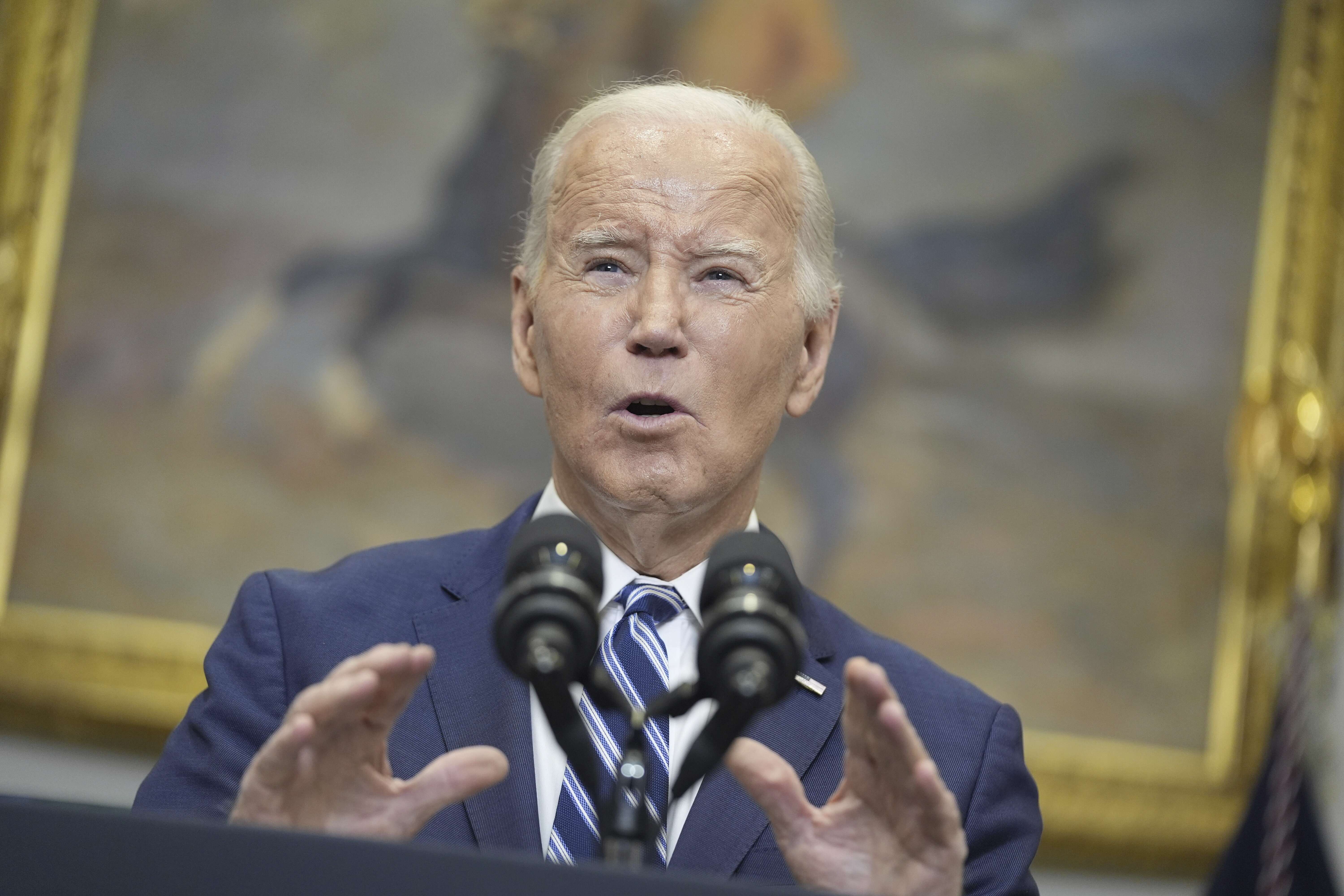Biden considering major new executive actions for migrant crisis

A trigger mechanism was part of a bipartisan Senate border deal that never reached the floor earlier this month. During the deal’s construction, President Joe Biden repeatedly said it would have given him the authority to “shut down” the border.
The administration is also discussing ways to make it harder for migrants to pass the initial screening for asylum seekers, essentially raising the “credible fear standard,” as well as ways to quickly deport others who don’t meet those elevated asylum standards. Two of the people said the policy announcements could come as soon as next week ahead of President Joe Biden’s State of the Union speech on March 7.
The slate of policies could allow the administration officials to fill some of the void left after congressional Republicans killed a bipartisan border deal in the Senate. But it would also open up the administration to criticism that it always had the tools at its disposal to more fully address the migrant crisis but waited to use them.
No final decisions have been made about what executive actions, if any, could be taken, an administration official said, speaking about internal deliberations only on condition of anonymity. Administrations often explore a number of options, the official said, though it doesn’t necessarily mean the policies will come to fruition.
The consideration of new executive action comes as the White House tries to turn the border deal failure into a political advantage for the president. It also comes amid growing concern among Democrats that the southern border presents a profound election liability for the party. Officials hope that policy announcements will drive down numbers of migrants coming to the border and demonstrate to voters that they’re exhausting all options to try to solve the problem as peak migration season quickly approaches.
“The Administration spent months negotiating in good faith to deliver the toughest and fairest bipartisan border security bill in decades because we need Congress to make significant policy reforms and to provide additional funding to secure our border and fix our broken immigration system,” said White House spokesperson Angelo Fernández Hernández.
“No executive action, no matter how aggressive, can deliver the significant policy reforms and additional resources Congress can provide and that Republicans rejected,” he continued.
The three people familiar with the planning cautioned that the details of proposed actions remain murky and that the impact of the policies — particularly the asylum ban — is also dependent on the specific language of the federal regulation, they said. For example, the Senate bill included exceptions for unaccompanied minors and people who meet the requirements of the United Nations Convention Against Torture rules.
There are other complications as well. The implementation of any action from the White House would come without the funding and resources that could make implementation easier, though the administration is looking into ways to unlock additional funding. The actions would likely face legal challenges as well.
The Trump administration repeatedly used Section 212(f) of the Immigration and Nationality Act to aggressively shape the immigration system. In late 2018, President Donald Trump signed a policy that temporarily barred migrants who tried to illegally cross into the U.S. outside of official ports of entry. It was quickly blocked by a federal judge in California. The 9th Circuit Court of Appeals agreed with the decision, which was then upheld by the Supreme Court.
The policies, once announced, will likely be met with steep backlash from immigration advocates who will claim the president is once again walking back on his campaign promises to rebuild a humane immigration system and protect the right to asylum.